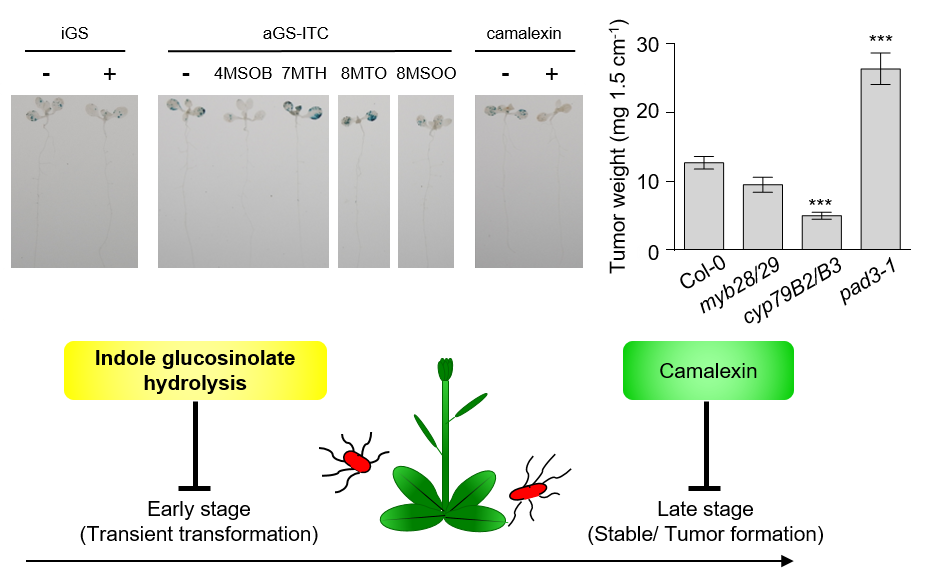[Erh-Min Lai] Differential Roles of Glucosinolates and Camalexin at Different Stages of Agrobacterium-Mediated Transformation
POST:
Agrobacterium tumefaciens is a plant pathogen, which causes crown gall disease in a wide range of plants via a unique interkingdom DNA transfer from bacterial cells into the plant genome. At the different transformation stages, many plant genes were known to regulate the transient and stable transformation. However, how plant secondary metabolites involved in this transformation process are still unknown. Erh-Min Lai’s group at the Institute of Plant and Microbial Biology studied the roles of the plant secondary metabolites, glucosinolates and camalexin, at the different stages of Agrobacterium transformation (Shih et al., 2018, Molecular Plant Pathology). Based on the Arabidopsis mutant studies, metabolite profiling and exogenous metabolite applications, they found that the indole glucosinolate (iGS) hydrolysis serves as the first layer to defend Agrobacterium infection at the early stage, and then camalexin accumulation plays an inhibitory role for tumor formation at the later stage. In addition, some aliphatic glucosinolate hydrolysis products (aGS-ITC) were shown to have various effects to control transient transformation efficiency on Arabidopsis seedlings. This study revealed the differential roles of glucosinolates and camalexin at different stages of Agrobacterium-mediated transformation and provided new insights into crown gall disease control and improvement of plant transformation.
